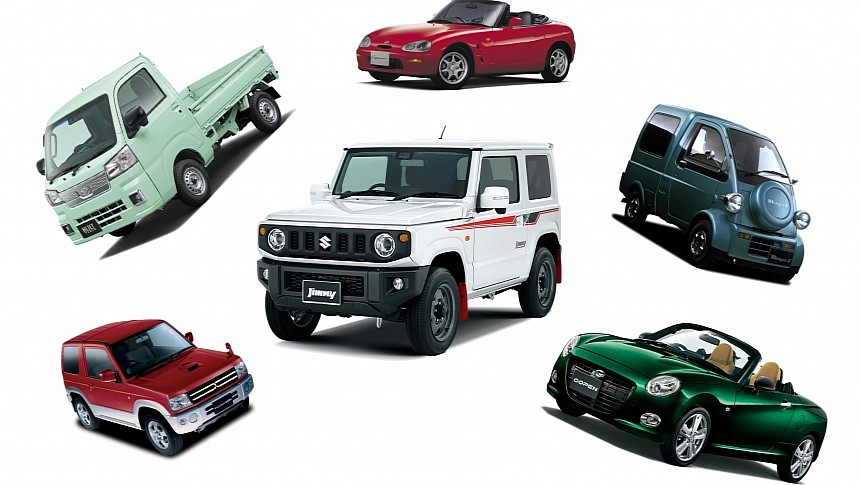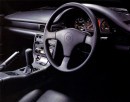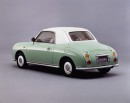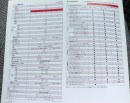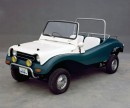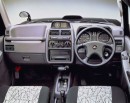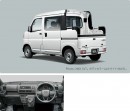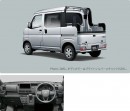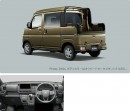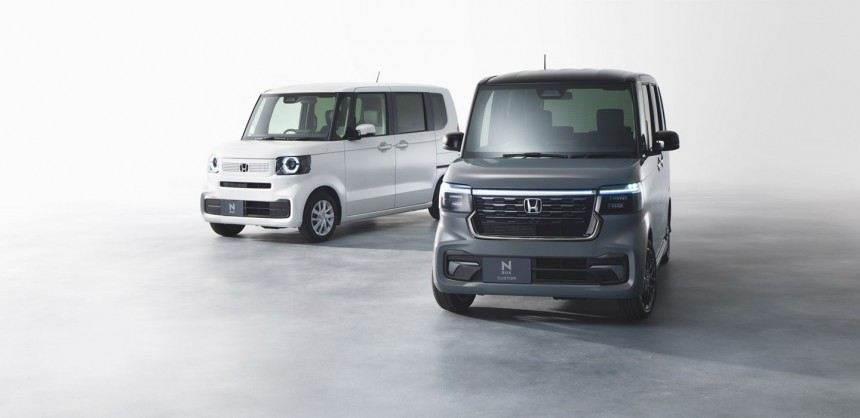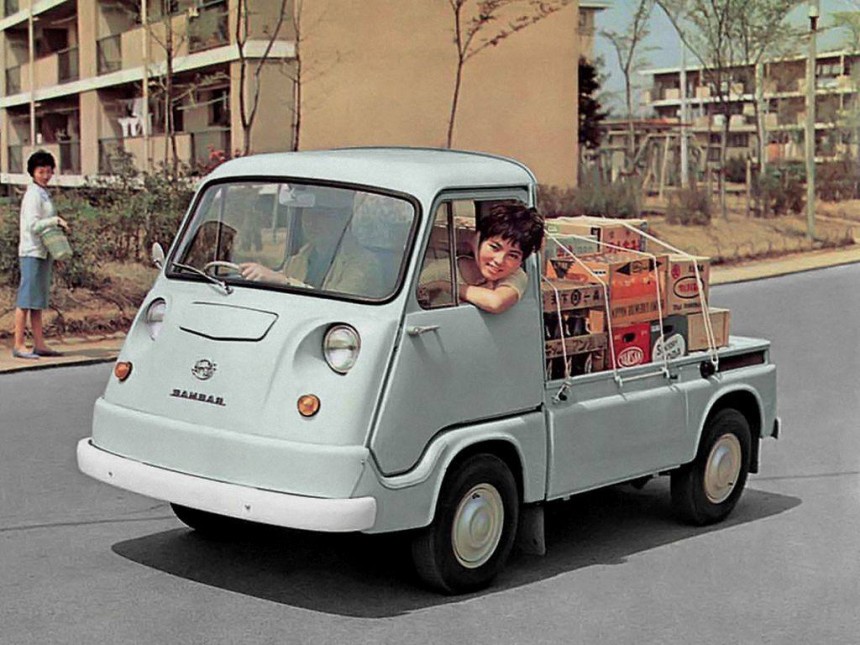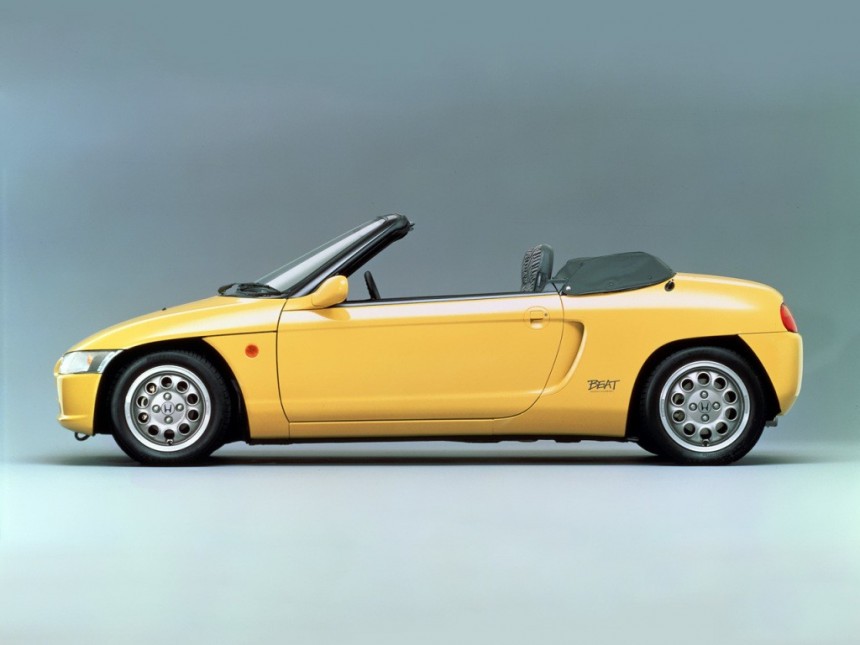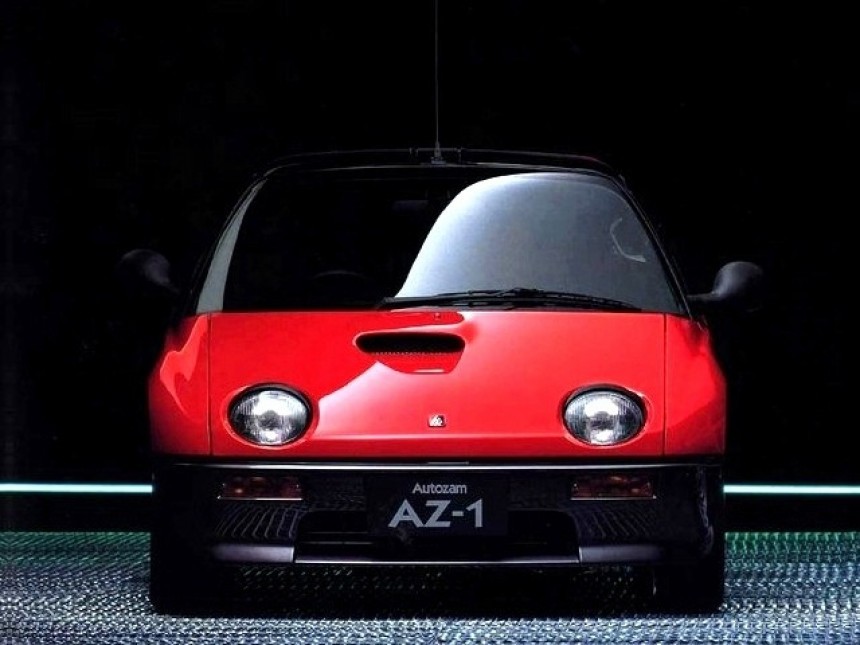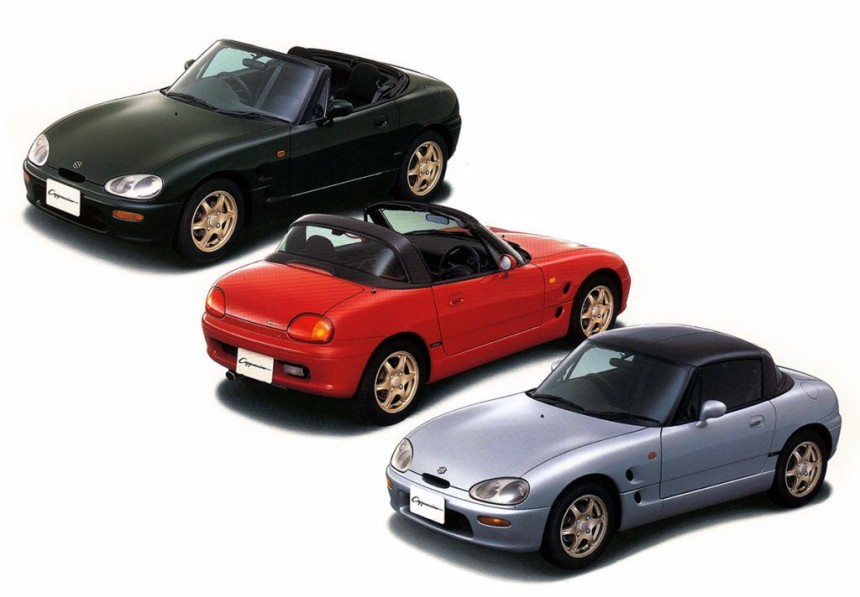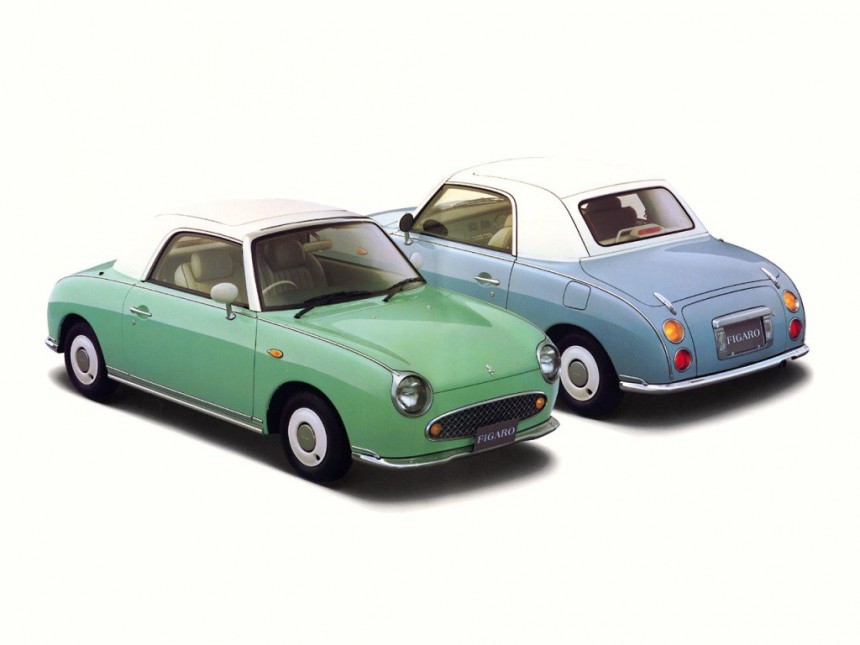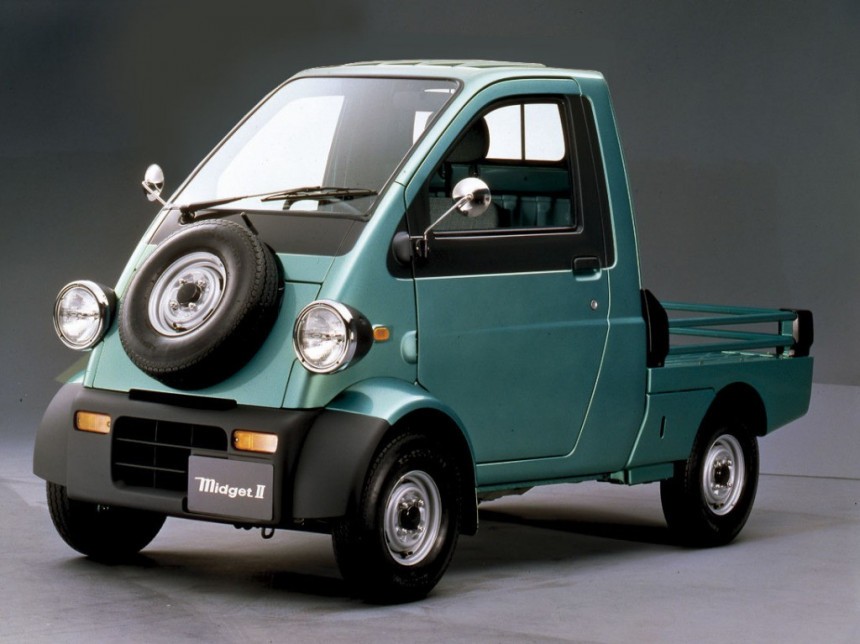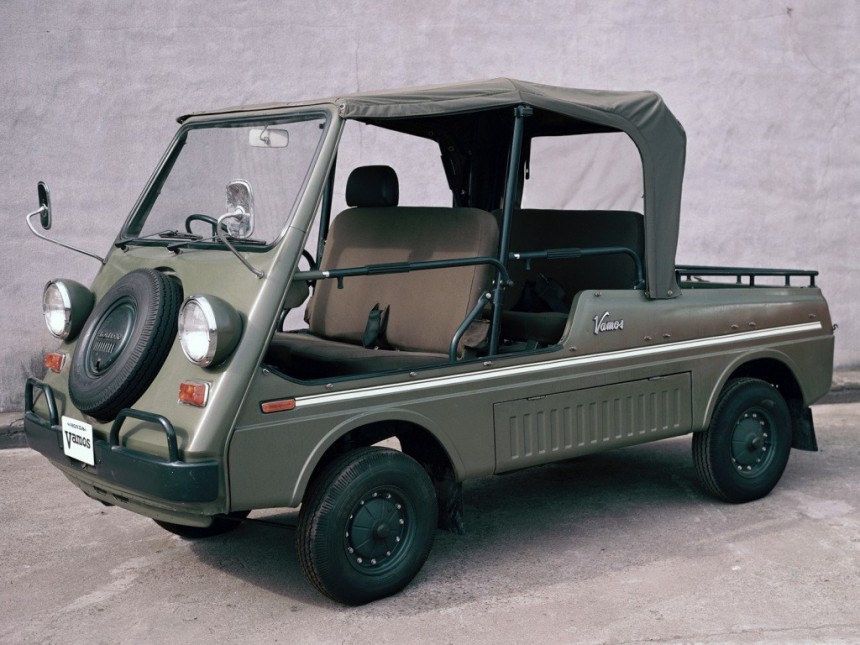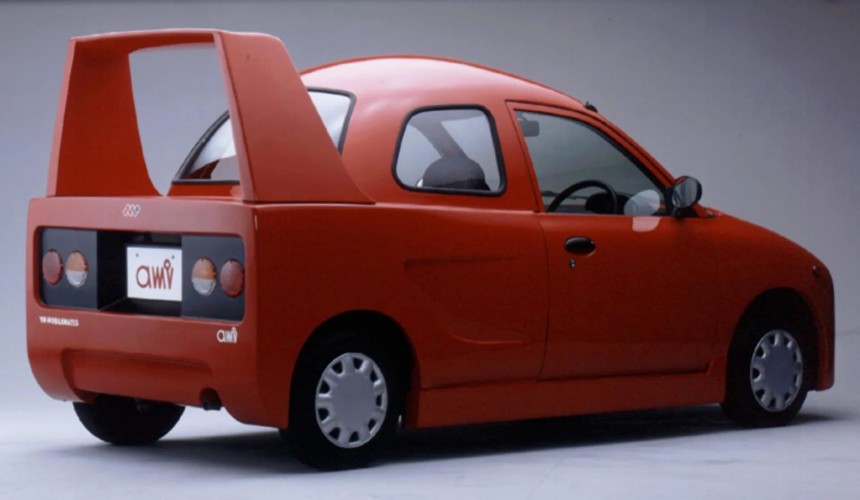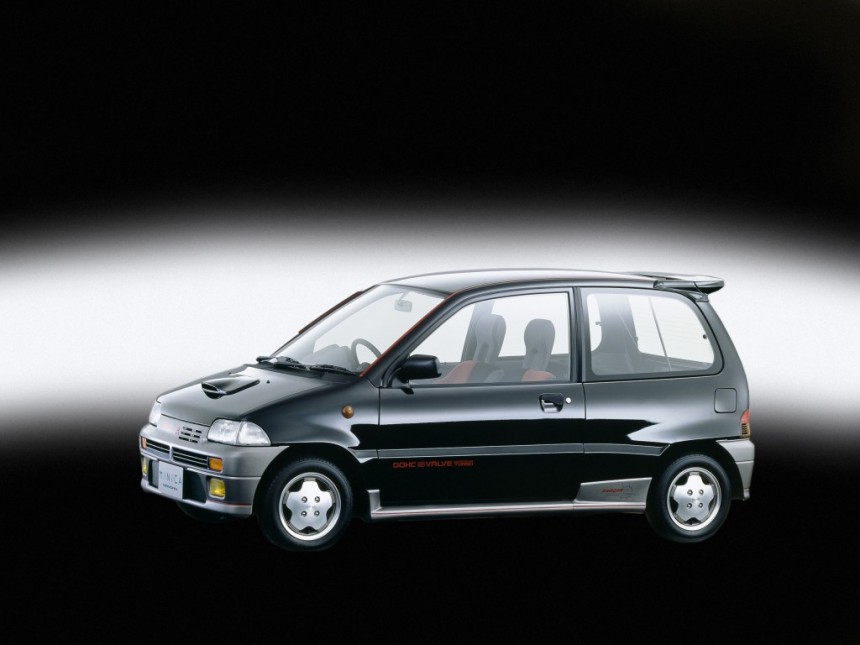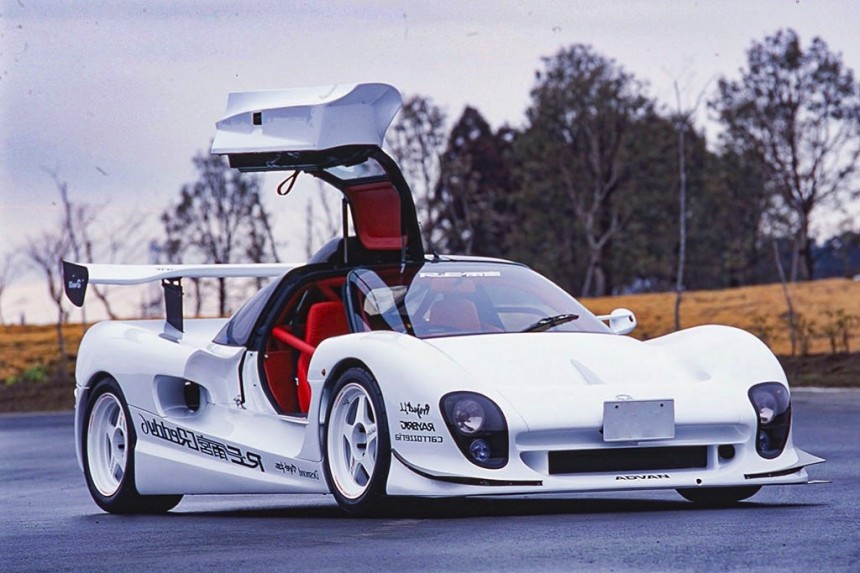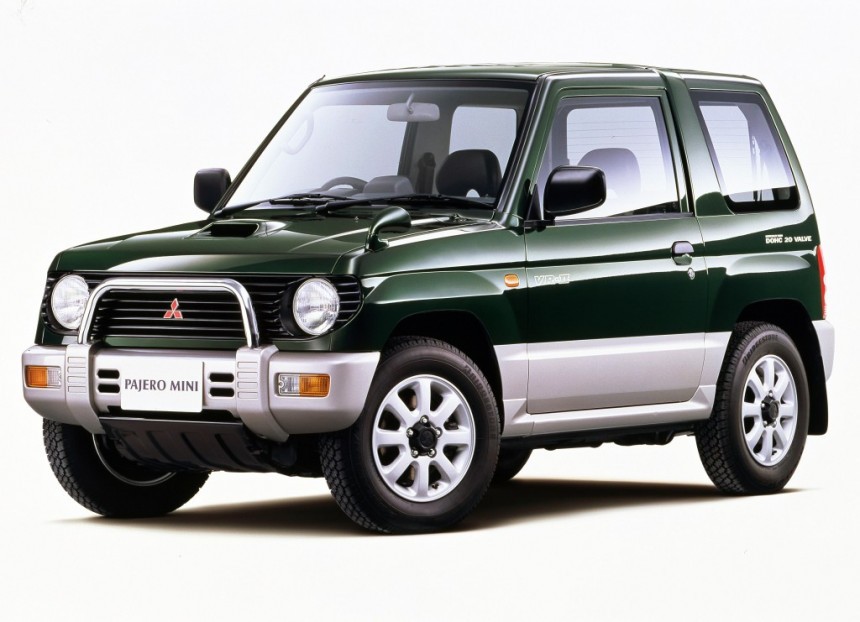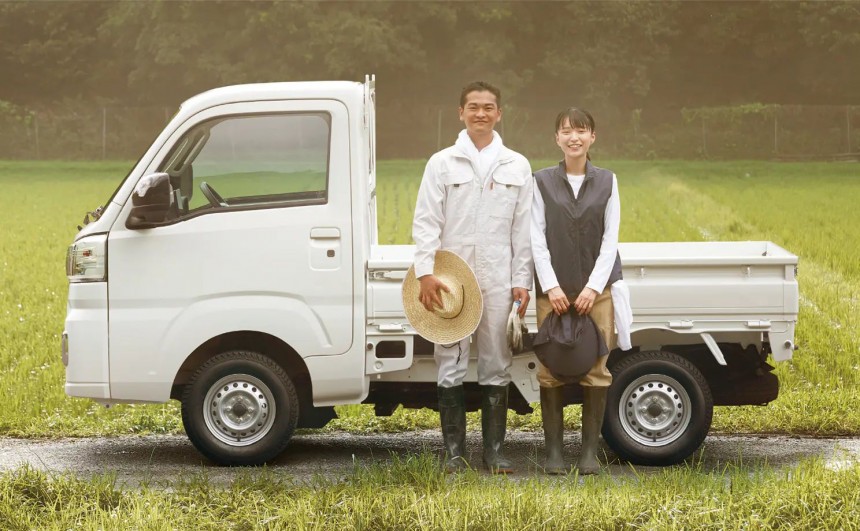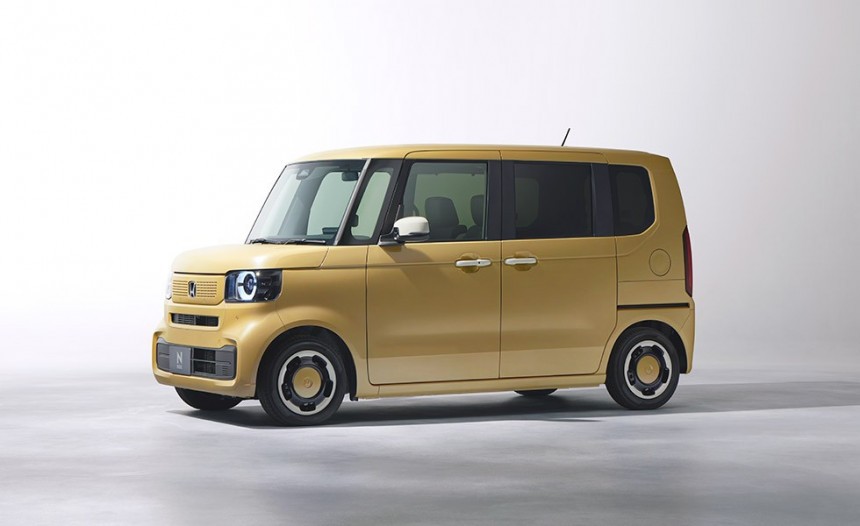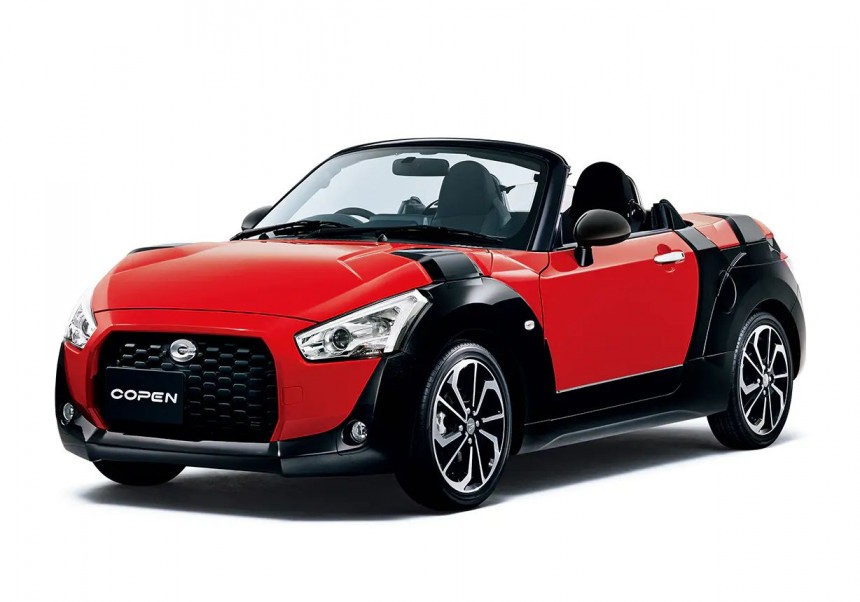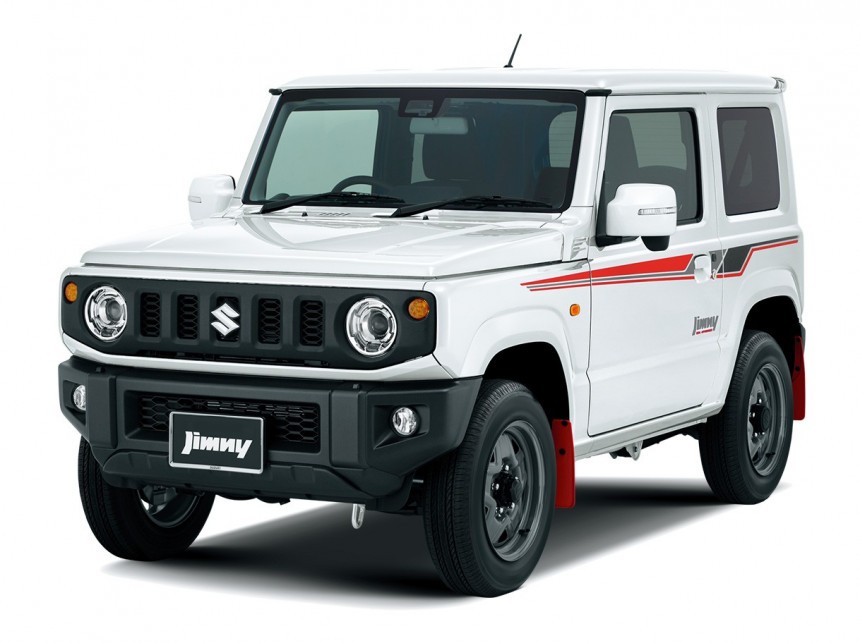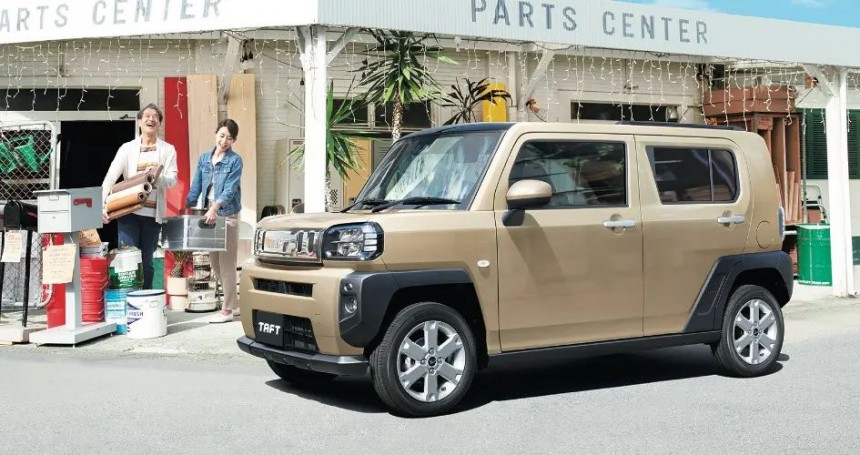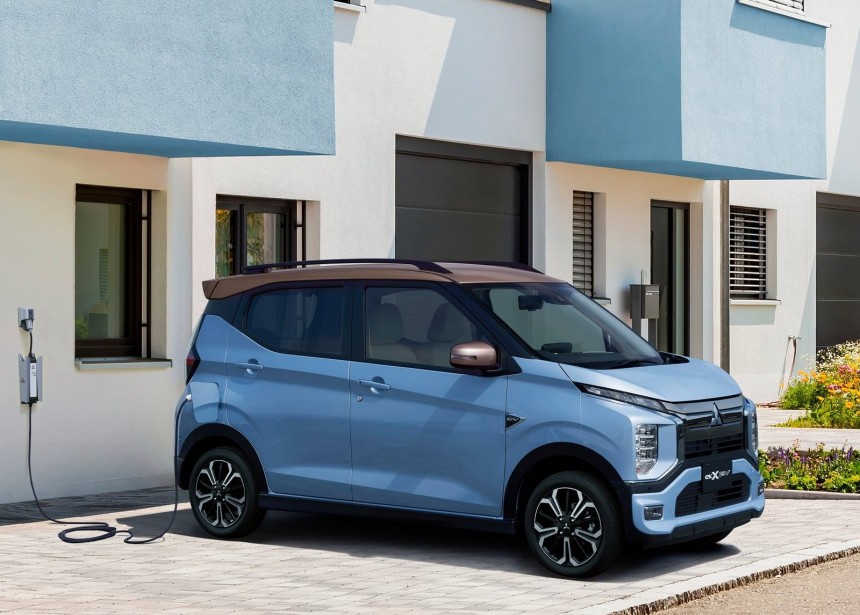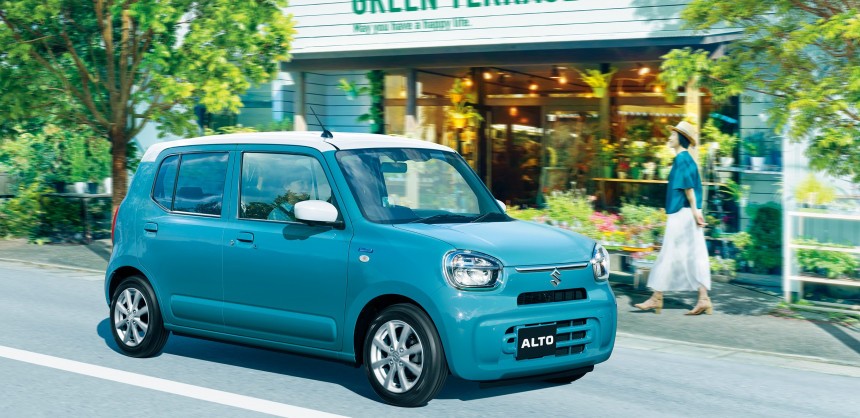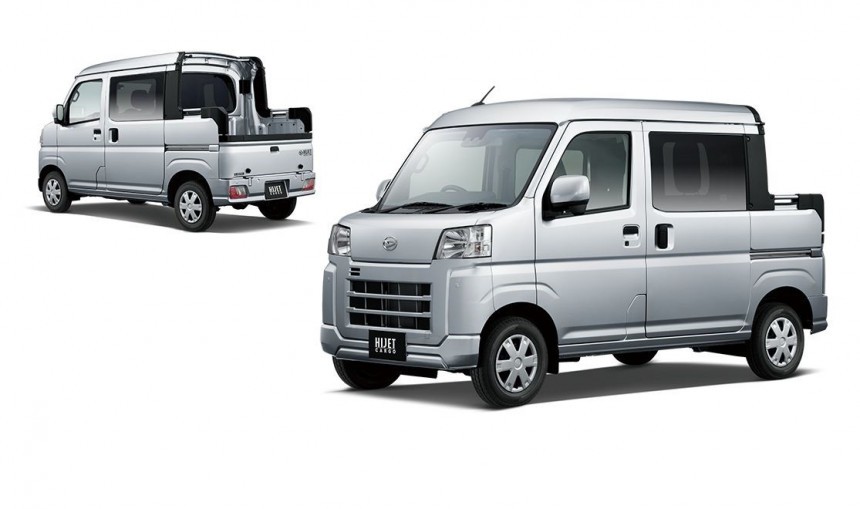Not to be confused with the K-car platform that Chrysler used in the 1980s for transverse front-wheel-drive automobiles, the kei car is the smallest class of highway-legal passenger and commercial vehicles in the Land of the Rising Sun. These dinky things are specific to Japan, where they're also called keijidosha (light automobile).
This category of vehicles can trace its roots back to the immediate aftermath of the deadliest conflict in recorded history. The reconstruction of Japan couldn't have been possible without locally produced affordable and easy-to-maintain automobiles. The keijidosha revolution started in July 1949, although it wouldn't pick up steam until later, in 1955. That's when the government regulated the max displacement of two- and four-stroke engines to 360 cubic centimeters. The 550-cc era kicked off in January 1976, whereas the 660-cc era began in October 1990.
Limited to 3.4 meters (11.2 feet) in length, 1.48 meters (4.9 feet) in width, and 2.0 meters (6.6 feet) in height, kei cars and trucks are tremendously popular due to a number of reasons. Chief among which, lower taxation and extremely limited space in the crowded metropolitan areas of Japan. Speaking of which, the Greater Tokyo Area is the most populous metropolitan area in the world, the home of 37 million souls (as per the latest census).
In terms of sales, Daihatsu is the undisputed leader of the segment. The other big players are Suzuki, Honda, and NMKV, the latter being a joint venture between Nissan and Mitsubishi. What about Subaru, Mazda, and Toyota? As it happens, all three of them rely on badge-engineered kei cars and trucks from the aforestated manufacturers.
Kei-class vehicles 25 years or older can be registered and driven on public roads in the United States of America thanks to something called the Imported Vehicle Safety Compliance Act of 1988. Newer vehicles can be imported as well, but you'll have to jump through many federal, state, and local hoops in order to enjoy them.
Generally speaking, more recent models can be imported as off-road vehicles as long as they're modified with a governor limiting their top speed to 25 miles per hour (40 kilometers per hour). If you aren't in the mood to jump through said hoops, there are US-based companies that are much obliged to handle everything in your stead.
Kei trucks are popular with farmers and ranchers. Kei cars, on the other hand, are much rarer on US roads. That being said, let's take a look at 20 of the best kei vehicles from the good ol' days all the way to the present day.
The Classics
Named after the displacement of its two-cylinder engine, the Subaru 360 is the Japanese automaker's first series-production automobile. Introduced in 1958, the so-called ladybug paved the road for the much quirkier Sambar.
Japan's first cab-over kei truck draws inspiration from a few European designs, including the Volkswagen Type 2 and Fiat 600 Multipla. The first generation came with a three-speed manual, whereas the second generation upgraded to a four-speed transmission. Both of them are connected to a two-stroke powerplant, which belts out anything between 18 and 26 ps (20 and 26 horsepower).
In production since 1961, the Sambar is named this way after the Samba bus. The sixth generation is the last one developed by Subaru. Starting with the seventh generation, the Subaru Sambar is – rather unfortunately – a badge-engineered Daihatsu. The current generation is based on the DNGA platform. At the moment of reporting, the online configurator lists 968,000 yen (6,610 dollars) as the starting price of the Sambar truck and 1,045,000 yen (7,135 dollars) for the Sambar van.
Rear-drive roadster with Pininfarina styling, the Beat is more than just a fun little car. It's the final series-production Honda to be approved by Soichiro Honda, a three-cylinder midship with a five-speed manual tranny.
Loosely inspired by the NSX, the Beat develops 63 naturally-aspirated ponies at 8,100 revolutions per minute. Peak torque is delivered at 7,000 spinnies to the tune of 44 pound-feet (60 Nm). Those figures may seem uninspiring, but on the other hand, they're perfectly adequate for a curb weight of 760 kilos (1,676 pounds).
Gifted with individual throttle bodies, the Beat was canned in 1996. Approximately two thirds of all Beats were assembled in the first 18 months of production. A little over 33,600 examples of the breed were manufactured between 1991 and 1996. That's more than 25 years ago, which makes the Beat a prime candidate for importation stateside under the 25-year import rule.
First things first, what in the name of all things holy is Autozam? To put it simply, it was a Mazda-owned automobile brand that specialized in kei and small cars. For a brief period, Autozam also sold Lancia vehicles such as the Y10, Delta, Prisma, Dedra, and Thema.
The single most iconic Autozam entitled to wear license plates is the AZ-1, yet another mid-engine kei car. Equipped with gullwing-style doors and a turbo inline-three motor from Suzuki, the AZ-1 launched in 1992.
Originally priced at 1,498,000 yen (10,230 dollars at current exchange rates) in the Land of the Rising Sun, the quirky-looking classic was more expensive than Honda's Beat and Suzuki's Cappuccino. Fewer than 4,400 were assembled, plus 531 units of the Suzuki-branded Cara.
Yet another kei sports car with a cult following, the Cappuccino rolled out in 1991. It was a bigger commercial hit than the Beat and AZ-1, with Suzuki producing a grand total of 28,010 units through 1998.
Quite a few of them found their way to the Old Continent. As expected, the United Kingdom received the biggest allocation. Launched in this part of the world in October 1993, the Cappuccino retailed at 11,995 pounds sterling. That's 31,265 pounds sterling adjusted for inflation, which converts to 39,335 freedom eagles.
Tipping the scales at 725 kilograms (just under 1,600 pounds), the Cappuccino was originally offered with the F6A three-cylinder turbo. The subsequent K6A switched from belt-driven camshafts to chain-driven camshafts, which upped the peak torque rating from 63 to 76 pound-feet (that would be 85 Nm and 103 Nm, respectively).
Many publications and car enthusiasts refer to the Figaro as being a kei car. Based on exterior dimensions and engine displacement, that's incorrect. Twinned with B-segment oddities like the S-Cargo due to its first-gen Nissan Micra underpinnings, the Figaro is remembered in the same breath as the AZ-1, Beat, and Cappuccino.
A three-speed automatic was the only transmission available, joined by a turbocharged four-cylinder lump with 987 cubic centimeters to its name. Rated at 106 miles per hour (170 kilometers per hour), the Figaro cranks out 75 horsepower and 78 pound-feet (108 Nm).
Nissan originally expected to sell 8,000 units of the fixed-profile convertible with retro styling. Just over 20,000 were built, and many customers were required to enter a lottery in order to get their hands on the Figaro.
Something Weird, Something Cool
The Midget was introduced in 1957 in the form of a three-wheeled truck with a doorless cab and – get this – handlebar steering. Previewed at the 1993 Tokyo Motor Show, the second generation followed in 1996 with four wheels and a rather quirky front-mounted spare wheel.
Behind those bug-eyed headlights, you'll find a cabin with either one or two seats. Because it's classified as a light commercial vehicle, the mid-mounted engine of the Midget II is tuned for low-end torque. Very popular with bar owners because it's the right size for hauling around beer kegs, this oddball produces 31-odd horsepower.
Less than 4.4 feet wide at 1,335 millimeters, the ultra-light Midget II could be had with a three-speed auto, a four-speed manual, or a five-speed manual. Only the range-topping R grade came with air conditioning.
Yet another kei truck fitted with a front-mounted spare, the Vamos didn't really catch on. Derived from the hugely popular TN360 cab-over pickup, this eccentric-looking vehicle is a crossover between a small truck and a beach buggy. Think of it as the Asian sibling of the Mini Moke, Citroen Mehari, and Volkswagen Thing.
Vamos is Spanish for let's go, yet the soft-topped Vamos is the opposite of a speed demon. The air-cooled engine displaces 354 cubic centimeters from two cylinders, with said powerplant adapted from the 444-cube mill of the CB450 motorcycle. It makes a meager 30 horsepower.
Produced between 1970 and 1973, the doorless wackadoodle features waterproof instrumentation and switches. Around 2,500 were produced in total, and very few are believed to exist in running condition today.
We associate Yamaha with motorcycles. Those who are into cars also know that Yamaha produced the Ford Vulcan-derived Super High Output V6 engine. Furthermore, remember that Yamaha also helped Toyota develop the screaming V10 motor of the Lexus LFA.
YM Mobilemates, which is a subsidiary of Yamaha, is the company responsible for the AMI. Look beyond the Ferrari F40-inspired body kit, and you're left with the chassis, oily bits, and interior of a Daihatsu hatchback.
Dubbed Opti, the hatchback in question develops 54 horsepower at full chatter from a 658-cc engine. By comparison, the F40 offers 477 hp from a twin-turbo V8 with a displacement of 2,936 cc. Yamaha-owned YM Mobilemates expected to convert 600 examples of the Daihatsu Opti into AMIs, yet only three were finished.
At first glance, you might be tempted to dismiss the Minica Dangan ZZ as nothing more than a kei car with no redeeming qualities whatsoever. That hood scoop, however, isn't there for show. A five-valve-per-cylinder turbocharged three-cylinder engine hides underhood, the first of only a handful ever produced in large numbers.
Other vehicles with this number of valves per cylinder include Bugatti's V12-powered EB 110 and Ferrari's V8-powered 355 series. The subsequent 360 also sports 40 valves. Turning our attention back to the Minica Dangan ZZ, it came with either a manual or an automatic box.
Capable of 9,000 revolutions per minute, the coolest kei car in Mitsubishi's long and storied history further sweetens the deal with optional all-wheel drive. The ZZ-4 is roughly 60 kilograms (132 pounds) heavier than the ZZ, though. Both of them are rated at 63 horsepower.
The Daihatsu Fellow Buggy is – without a shadow of a doubt – one of the coolest and weirdest kei cars of the bunch. An estimated 100 units were manufactured in 1970 on the chassis of the S37 Hijet cab-over truck.
Produced from 1968 through 1972, the third generation of the Daihatsu Hijet offered no more than 23 horsepower from a two-cylinder lump. Said engine propels the S37 to 85 kilometers per hour (53 miles per hour). The Fellow Buggy uses a slightly pokier variant of said engine, packing 26 naturally-aspirated ponies.
Bodied in fiberglass, the ultra-rare buggy can accelerate to 95 kilometers per hour (59 miles per hour). Tipping the scales at 440 kilograms (970 pounds), the Fellow Buggy is Japan's closest equivalent to the Beetle-based Meyers Manx. Just like the Manx, it's rear-wheel drive.
Revealed at the 1996 Tokyo Auto Salon, the VI-AZ1 isn't only a body kit for the Autozam AZ-1 covered earlier. RE Amemiya made a name for itself by tuning and racing the Mazda RX-7 sports car. Given this background information, are you surprised to find out that a Mazda 20B three-rotor engine powers the GReddy VI-AZ1?
The 20B was exclusive to the Eunos Cosmo, which makes 276 horsepower and 297 pound-feet (403 Nm). The RE Amemiya GReddy VI-AZ1 belts out quite a bit more. A miniature McLaren F1 from the rear, this mid-engine bruiser doesn't look anything like the car on which it's based. As far as body panels are concerned, only the gullwing doors are shared with the Autozam.
Presented in 1994, the kei sport utility vehicle could be had with either front- or four-wheel drive. Produced over two generations through 2012, the Pajero Mini was offered with either naturally-aspirated or turbo'd mills.
A five-speed manual was standard, although customers were also presented with a choice between three- and four-speed automatic trannies. A whopping 104,990 units were assembled in 1995, the first full year of production. Despite canning the Pajero Mini in 2012, the Japanese brand sold 32 units between 2013 and 2017.
The Best Kei Cars and Trucks in Production Today
Daihatsu's first kei-sized truck, the Hijet launched with much pomp in 1960. More than six decades later, the 11th generation was introduced in December 2021 for the 2022 model year. A front-mid-engine design with either rear- or all-wheel drive, the Hijet can be configured with a five-speed manual tranny or a CVT.
Twinned with the Subaru Sambar and Toyota Pixis on the Daihatsu New Global Architecture, the Hijet flaunts the largest cargo space in its class. For the time being, Daihatsu offers three main configurations: the Standard, Extra, and Jumba Extra. The latter features a slightly taller and longer cab, allowing the seats to be reclined.
The kei truck can be had with a three-cylinder engine of the naturally-aspirated or turbo variety. Pricing starts at 902,000 yen (6,160 dollars) for the Standard without Smart Assist. At the other end of the spectrum, the Jumbo Extra is 1,243,000 yen (8,490 dollars). Come 2024, the Hijet Truck will receive an electric powertrain with just around 200 kilometers (124 miles) of driving range.
A tall wagon rather than a traditional hatchback, the N-Box doubles down on practicality with rear sliding doors. Redesigned in August 2023 for MY24, the N-Box is split into two distinct lines: N-Box and N-Box Custom. The N-Box Custom features a snazzier grille and exterior lights, yet the interior hardly differs from the N-Box.
Rated at 27 kilometers per liter of gasoline, as in 63.5 gallons per gallon, the best-selling automobile in Japan also happens to be sensibly priced. The N-Box is 1,468,500 yen (10,030 dollars), and the N-Box Custom starts at 1,824,900 yen (12,465 dollars) at press time.
Due to regulations, the 658-cc turbocharged engine of this diminutive roadster makes 47 kilowatts, as in 63 horsepower. Torque is estimated at 92 Nm (68 pound-feet) for all four available trim levels. The XPLAY builds on the base grade with a two-tone exterior. The Cero is a retro throwback with circular headlights, whereas the Gazoo Racing-infused GR Sport is self-explanatory.
3,395 millimeters (133.6 inches) long and 1,280 millimeters (50.4 inches) tall, the Copen offers the choice between a five-speed manual and a continuously variable transmission with seven-speed Super Active Shift manual mode. Opting for the continuously variable tranny adds 20 kilos (44 pounds) over the stick shift.
Both the Sierra and 5-Door boast a naturally-aspirated 1.5 four-pot engine that leaves much to be desired. The kei-class Jimny downsizes to a 658-cc turbo with three cylinders arranged in a line. The Caterham Seven 170 also uses said engine, although tuned to 84 horsepower.
Priced at 1,804,000 yen (12,320 dollars) and 1,985,500 yen (13,560 dollars), the Jimny doesn't have rear seats in Europe. Why? Because reclassifying the Jimny as an N1 commercial vehicle was the easiest way for Suzuki to lower its fleet-average CO2 emissions. With Euro 7 knocking at the door, it's only a matter of time until the Jimny goes electric in Europe and the United Kingdom.
Codenamed LA900, the Taft sold 56,861 units last year. The crossover's unassuming nameplate isn't a reference to William Howard Taft. It actually stands for Tough and Almighty Fun Tool, which is ridiculous. Not as ridiculous as Naked, though, a moniker used between 1999 and 2004 for a kei hatchback with rugged styling.
Once again with a feeling, Daihatsu offers a three-cylinder engine with optional turbocharging. All-wheel drive is an extra as well. Equipped with a continuously variable transmission, the Taft is priced at ¥1,320,000 yen ($9,015) for the X 2WD base trim level. By the way, eco IDLE start-stop happens to be an option as well.
Limited to the kei class-specific 63 horsepower, the eK X EV can be driven up to 180 kilometers (112 miles) on a full charge of the 20-kWh battery. Being an electric vehicle, it weighs a bit more than internal combustion-engined kei cars. According to Mitsubishi, the lightest configuration weighs 1,060 kilograms (2,337 pounds).
Designated 2022-2023 Japan Car of the Year and 2022-2023 K Car of the Year back in December 2022, the eK X EV isn't affordable by kei-class standards. The G trim level is 2,546,500 yen (17,390 dollars), while the better-equipped P grade costs 3,081,100 yen (21,040 dollars).
A and L are purely internal combustion, whereas the S and X come as mild hybrids. The pricing difference isn't large, though: 943,800 yen (6,445 dollars) for the A compared to 1,097,800 yen (7,500 dollars) for the S.
Under the JC08 test cycle used by the Japanese automotive industry, the 658-cc R06A of the A and L is rated at 29.4 kilometers per liter of dino juice, meaning 69.1 miles per gallon. The 657-cc R06D mild hybrid offers 33.1 kilometers per liter (77.8 miles per gallon).
Only the L trim level comes with a five-speed manual (starting at ¥1,320,000 or $9,015 at current exchange rates). The G and Atrai are equipped with a continuously variable transmission. All three grades are 2WD by default or part-time 4WD if you so wish. The all-wheel-drive option costs 154,000 yen (1,050 dollars) extra.
A strict four-seater with rear seats that fold completely flat, the Hijet Deck Van rolls on 145/80 R12 tires. By comparison, the 2024 model year Ford Maverick XL is rocking silver steelies wrapped in 225/65 R17s.
Limited to 3.4 meters (11.2 feet) in length, 1.48 meters (4.9 feet) in width, and 2.0 meters (6.6 feet) in height, kei cars and trucks are tremendously popular due to a number of reasons. Chief among which, lower taxation and extremely limited space in the crowded metropolitan areas of Japan. Speaking of which, the Greater Tokyo Area is the most populous metropolitan area in the world, the home of 37 million souls (as per the latest census).
In terms of sales, Daihatsu is the undisputed leader of the segment. The other big players are Suzuki, Honda, and NMKV, the latter being a joint venture between Nissan and Mitsubishi. What about Subaru, Mazda, and Toyota? As it happens, all three of them rely on badge-engineered kei cars and trucks from the aforestated manufacturers.
Kei-class vehicles 25 years or older can be registered and driven on public roads in the United States of America thanks to something called the Imported Vehicle Safety Compliance Act of 1988. Newer vehicles can be imported as well, but you'll have to jump through many federal, state, and local hoops in order to enjoy them.
Generally speaking, more recent models can be imported as off-road vehicles as long as they're modified with a governor limiting their top speed to 25 miles per hour (40 kilometers per hour). If you aren't in the mood to jump through said hoops, there are US-based companies that are much obliged to handle everything in your stead.
Kei trucks are popular with farmers and ranchers. Kei cars, on the other hand, are much rarer on US roads. That being said, let's take a look at 20 of the best kei vehicles from the good ol' days all the way to the present day.
The Classics
Subaru Sambar
Japan's first cab-over kei truck draws inspiration from a few European designs, including the Volkswagen Type 2 and Fiat 600 Multipla. The first generation came with a three-speed manual, whereas the second generation upgraded to a four-speed transmission. Both of them are connected to a two-stroke powerplant, which belts out anything between 18 and 26 ps (20 and 26 horsepower).
In production since 1961, the Sambar is named this way after the Samba bus. The sixth generation is the last one developed by Subaru. Starting with the seventh generation, the Subaru Sambar is – rather unfortunately – a badge-engineered Daihatsu. The current generation is based on the DNGA platform. At the moment of reporting, the online configurator lists 968,000 yen (6,610 dollars) as the starting price of the Sambar truck and 1,045,000 yen (7,135 dollars) for the Sambar van.
Honda Beat
Loosely inspired by the NSX, the Beat develops 63 naturally-aspirated ponies at 8,100 revolutions per minute. Peak torque is delivered at 7,000 spinnies to the tune of 44 pound-feet (60 Nm). Those figures may seem uninspiring, but on the other hand, they're perfectly adequate for a curb weight of 760 kilos (1,676 pounds).
Gifted with individual throttle bodies, the Beat was canned in 1996. Approximately two thirds of all Beats were assembled in the first 18 months of production. A little over 33,600 examples of the breed were manufactured between 1991 and 1996. That's more than 25 years ago, which makes the Beat a prime candidate for importation stateside under the 25-year import rule.
Autozam AZ-1
The single most iconic Autozam entitled to wear license plates is the AZ-1, yet another mid-engine kei car. Equipped with gullwing-style doors and a turbo inline-three motor from Suzuki, the AZ-1 launched in 1992.
Originally priced at 1,498,000 yen (10,230 dollars at current exchange rates) in the Land of the Rising Sun, the quirky-looking classic was more expensive than Honda's Beat and Suzuki's Cappuccino. Fewer than 4,400 were assembled, plus 531 units of the Suzuki-branded Cara.
Suzuki Cappuccino
Quite a few of them found their way to the Old Continent. As expected, the United Kingdom received the biggest allocation. Launched in this part of the world in October 1993, the Cappuccino retailed at 11,995 pounds sterling. That's 31,265 pounds sterling adjusted for inflation, which converts to 39,335 freedom eagles.
Tipping the scales at 725 kilograms (just under 1,600 pounds), the Cappuccino was originally offered with the F6A three-cylinder turbo. The subsequent K6A switched from belt-driven camshafts to chain-driven camshafts, which upped the peak torque rating from 63 to 76 pound-feet (that would be 85 Nm and 103 Nm, respectively).
Nissan Figaro
A three-speed automatic was the only transmission available, joined by a turbocharged four-cylinder lump with 987 cubic centimeters to its name. Rated at 106 miles per hour (170 kilometers per hour), the Figaro cranks out 75 horsepower and 78 pound-feet (108 Nm).
Nissan originally expected to sell 8,000 units of the fixed-profile convertible with retro styling. Just over 20,000 were built, and many customers were required to enter a lottery in order to get their hands on the Figaro.
Something Weird, Something Cool
Daihatsu Midget II
Behind those bug-eyed headlights, you'll find a cabin with either one or two seats. Because it's classified as a light commercial vehicle, the mid-mounted engine of the Midget II is tuned for low-end torque. Very popular with bar owners because it's the right size for hauling around beer kegs, this oddball produces 31-odd horsepower.
Less than 4.4 feet wide at 1,335 millimeters, the ultra-light Midget II could be had with a three-speed auto, a four-speed manual, or a five-speed manual. Only the range-topping R grade came with air conditioning.
Honda Vamos
Vamos is Spanish for let's go, yet the soft-topped Vamos is the opposite of a speed demon. The air-cooled engine displaces 354 cubic centimeters from two cylinders, with said powerplant adapted from the 444-cube mill of the CB450 motorcycle. It makes a meager 30 horsepower.
Produced between 1970 and 1973, the doorless wackadoodle features waterproof instrumentation and switches. Around 2,500 were produced in total, and very few are believed to exist in running condition today.
YM Mobilemates AMI
YM Mobilemates, which is a subsidiary of Yamaha, is the company responsible for the AMI. Look beyond the Ferrari F40-inspired body kit, and you're left with the chassis, oily bits, and interior of a Daihatsu hatchback.
Dubbed Opti, the hatchback in question develops 54 horsepower at full chatter from a 658-cc engine. By comparison, the F40 offers 477 hp from a twin-turbo V8 with a displacement of 2,936 cc. Yamaha-owned YM Mobilemates expected to convert 600 examples of the Daihatsu Opti into AMIs, yet only three were finished.
Mitsubishi Minica Dangan ZZ
Other vehicles with this number of valves per cylinder include Bugatti's V12-powered EB 110 and Ferrari's V8-powered 355 series. The subsequent 360 also sports 40 valves. Turning our attention back to the Minica Dangan ZZ, it came with either a manual or an automatic box.
Capable of 9,000 revolutions per minute, the coolest kei car in Mitsubishi's long and storied history further sweetens the deal with optional all-wheel drive. The ZZ-4 is roughly 60 kilograms (132 pounds) heavier than the ZZ, though. Both of them are rated at 63 horsepower.
Daihatsu Fellow Buggy
Produced from 1968 through 1972, the third generation of the Daihatsu Hijet offered no more than 23 horsepower from a two-cylinder lump. Said engine propels the S37 to 85 kilometers per hour (53 miles per hour). The Fellow Buggy uses a slightly pokier variant of said engine, packing 26 naturally-aspirated ponies.
Bodied in fiberglass, the ultra-rare buggy can accelerate to 95 kilometers per hour (59 miles per hour). Tipping the scales at 440 kilograms (970 pounds), the Fellow Buggy is Japan's closest equivalent to the Beetle-based Meyers Manx. Just like the Manx, it's rear-wheel drive.
RE Amemiya GReddy VI-AZ1
GReddy is best known for aftermarket upgrades, including exhausts, intakes, turbos, coilovers, and everything in between. A one-off kei sports car built by Japanese tuner RE Amemiya, the VI-AZ1 carries the GReddy name as a nod to the tuner's long-time partner. VI stands for the sixth incarnation of their project car.Revealed at the 1996 Tokyo Auto Salon, the VI-AZ1 isn't only a body kit for the Autozam AZ-1 covered earlier. RE Amemiya made a name for itself by tuning and racing the Mazda RX-7 sports car. Given this background information, are you surprised to find out that a Mazda 20B three-rotor engine powers the GReddy VI-AZ1?
The 20B was exclusive to the Eunos Cosmo, which makes 276 horsepower and 297 pound-feet (403 Nm). The RE Amemiya GReddy VI-AZ1 belts out quite a bit more. A miniature McLaren F1 from the rear, this mid-engine bruiser doesn't look anything like the car on which it's based. As far as body panels are concerned, only the gullwing doors are shared with the Autozam.
Mitsubishi Pajero Mini
The Pajero spawned a number of mini adaptations. The Pajero Junior and Pajero iO mini SUVs come to mind. The only kei-sized Pajero ever produced is the cutesy Pajero Mini, which is technically related to the Minica.Presented in 1994, the kei sport utility vehicle could be had with either front- or four-wheel drive. Produced over two generations through 2012, the Pajero Mini was offered with either naturally-aspirated or turbo'd mills.
A five-speed manual was standard, although customers were also presented with a choice between three- and four-speed automatic trannies. A whopping 104,990 units were assembled in 1995, the first full year of production. Despite canning the Pajero Mini in 2012, the Japanese brand sold 32 units between 2013 and 2017.
The Best Kei Cars and Trucks in Production Today
Daihatsu Hijet Truck
Daihatsu's first kei-sized truck, the Hijet launched with much pomp in 1960. More than six decades later, the 11th generation was introduced in December 2021 for the 2022 model year. A front-mid-engine design with either rear- or all-wheel drive, the Hijet can be configured with a five-speed manual tranny or a CVT.
Twinned with the Subaru Sambar and Toyota Pixis on the Daihatsu New Global Architecture, the Hijet flaunts the largest cargo space in its class. For the time being, Daihatsu offers three main configurations: the Standard, Extra, and Jumba Extra. The latter features a slightly taller and longer cab, allowing the seats to be reclined.
The kei truck can be had with a three-cylinder engine of the naturally-aspirated or turbo variety. Pricing starts at 902,000 yen (6,160 dollars) for the Standard without Smart Assist. At the other end of the spectrum, the Jumbo Extra is 1,243,000 yen (8,490 dollars). Come 2024, the Hijet Truck will receive an electric powertrain with just around 200 kilometers (124 miles) of driving range.
Honda N-Box
The "Enubokkusu" is Japan's favorite kei car and best-selling passenger vehicle. Deliveries totaled 112,248 units in the first half of 2023. Toyota settled for second place with 97,421 examples of the B-segment Yaris.A tall wagon rather than a traditional hatchback, the N-Box doubles down on practicality with rear sliding doors. Redesigned in August 2023 for MY24, the N-Box is split into two distinct lines: N-Box and N-Box Custom. The N-Box Custom features a snazzier grille and exterior lights, yet the interior hardly differs from the N-Box.
Rated at 27 kilometers per liter of gasoline, as in 63.5 gallons per gallon, the best-selling automobile in Japan also happens to be sensibly priced. The N-Box is 1,468,500 yen (10,030 dollars), and the N-Box Custom starts at 1,824,900 yen (12,465 dollars) at press time.
Daihatsu Copen
The Beat and Cappuccino may be long gone, but their spirits live on in the Copen. Previewed as a concept in 1999, the front-engine kei car is a front-wheel-drive affair with a curb weight of 850 kilos (1,874 pounds).Due to regulations, the 658-cc turbocharged engine of this diminutive roadster makes 47 kilowatts, as in 63 horsepower. Torque is estimated at 92 Nm (68 pound-feet) for all four available trim levels. The XPLAY builds on the base grade with a two-tone exterior. The Cero is a retro throwback with circular headlights, whereas the Gazoo Racing-infused GR Sport is self-explanatory.
3,395 millimeters (133.6 inches) long and 1,280 millimeters (50.4 inches) tall, the Copen offers the choice between a five-speed manual and a continuously variable transmission with seven-speed Super Active Shift manual mode. Opting for the continuously variable tranny adds 20 kilos (44 pounds) over the stick shift.
Suzuki Jimny
The Jimny sold in excess of 3,000,000 examples since 1970. Currently in its fourth generation, the Jimny is available in three flavors: the Jimny kei car for Japan, the slightly larger and punchier Jimny Sierra, and even larger Jimny 5-Door. The Sierra is manufactured in Japan and India, whereas the 5-Door is made exclusively in India.Both the Sierra and 5-Door boast a naturally-aspirated 1.5 four-pot engine that leaves much to be desired. The kei-class Jimny downsizes to a 658-cc turbo with three cylinders arranged in a line. The Caterham Seven 170 also uses said engine, although tuned to 84 horsepower.
Priced at 1,804,000 yen (12,320 dollars) and 1,985,500 yen (13,560 dollars), the Jimny doesn't have rear seats in Europe. Why? Because reclassifying the Jimny as an N1 commercial vehicle was the easiest way for Suzuki to lower its fleet-average CO2 emissions. With Euro 7 knocking at the door, it's only a matter of time until the Jimny goes electric in Europe and the United Kingdom.
Daihatsu Taft
Originally a mini off-road vehicle (F10 series), the Taft morphed into a slightly larger off-road vehicle (F70 series) in 1984. This nameplate returned to Daihatsu's lineup in 2020 for a kei crossover with rugged styling.Codenamed LA900, the Taft sold 56,861 units last year. The crossover's unassuming nameplate isn't a reference to William Howard Taft. It actually stands for Tough and Almighty Fun Tool, which is ridiculous. Not as ridiculous as Naked, though, a moniker used between 1999 and 2004 for a kei hatchback with rugged styling.
Once again with a feeling, Daihatsu offers a three-cylinder engine with optional turbocharging. All-wheel drive is an extra as well. Equipped with a continuously variable transmission, the Taft is priced at ¥1,320,000 yen ($9,015) for the X 2WD base trim level. By the way, eco IDLE start-stop happens to be an option as well.
Mitsubishi eK X EV
Twinned with the Nissan Sakura, the eK X EV is a kei-class electric vehicle with the front-end styling of the Outlander. Developed with city dwellers in mind, this four-wheeled box produces 195 Nm (144 pound-feet).Limited to the kei class-specific 63 horsepower, the eK X EV can be driven up to 180 kilometers (112 miles) on a full charge of the 20-kWh battery. Being an electric vehicle, it weighs a bit more than internal combustion-engined kei cars. According to Mitsubishi, the lightest configuration weighs 1,060 kilograms (2,337 pounds).
Designated 2022-2023 Japan Car of the Year and 2022-2023 K Car of the Year back in December 2022, the eK X EV isn't affordable by kei-class standards. The G trim level is 2,546,500 yen (17,390 dollars), while the better-equipped P grade costs 3,081,100 yen (21,040 dollars).
Suzuki Alto
Named after the musical term derived from the Latin word for high or tall, the Alto premiered in 1979 as the cargo version of the Suzuki Fronte. Also sold as the Mazda Carol, the Alto is available in four trim levels.A and L are purely internal combustion, whereas the S and X come as mild hybrids. The pricing difference isn't large, though: 943,800 yen (6,445 dollars) for the A compared to 1,097,800 yen (7,500 dollars) for the S.
Under the JC08 test cycle used by the Japanese automotive industry, the 658-cc R06A of the A and L is rated at 29.4 kilometers per liter of dino juice, meaning 69.1 miles per gallon. The 657-cc R06D mild hybrid offers 33.1 kilometers per liter (77.8 miles per gallon).
Daihatsu Hijet Deck Van
Essentially a van with a truck bed, the Hijet Deck Van is a compromise between the Hijet Cargo and Hijet Truck. Be that as it may, it's – hands down – the most unconventional kei-class vehicle in production today.Only the L trim level comes with a five-speed manual (starting at ¥1,320,000 or $9,015 at current exchange rates). The G and Atrai are equipped with a continuously variable transmission. All three grades are 2WD by default or part-time 4WD if you so wish. The all-wheel-drive option costs 154,000 yen (1,050 dollars) extra.
A strict four-seater with rear seats that fold completely flat, the Hijet Deck Van rolls on 145/80 R12 tires. By comparison, the 2024 model year Ford Maverick XL is rocking silver steelies wrapped in 225/65 R17s.
